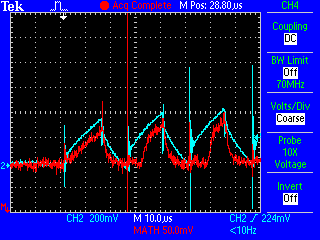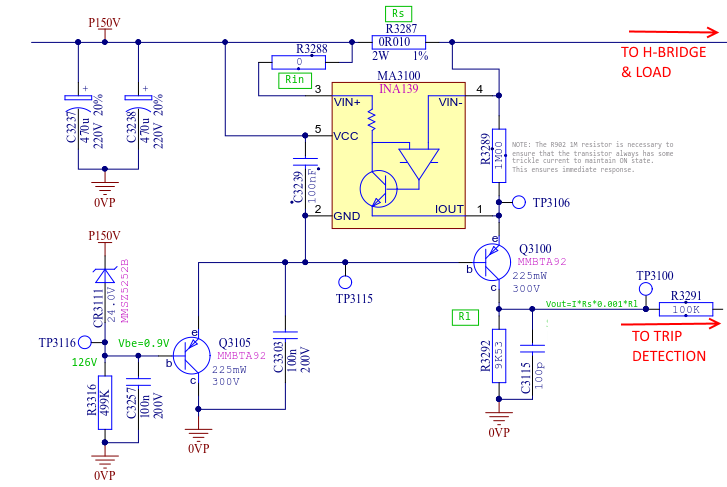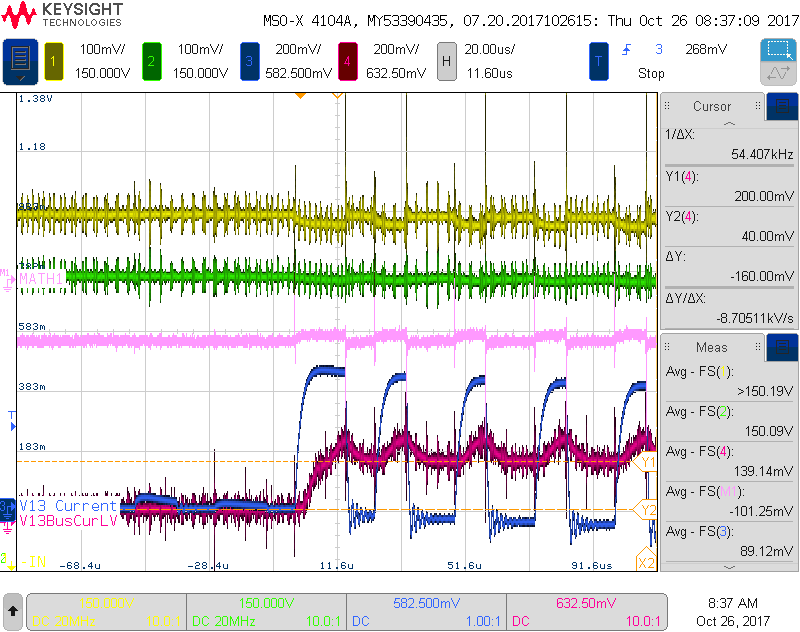Other Parts Discussed in Thread: INA210, INA225, INA199, LMP8481, INA250, REF200
We are measuring high side current draw on a standard half-bridge, driving into an inductive load. Our design is using the INA139 as a current protection device to turn off the MOSFETs during a short circuit event. As such, we need to have a very fast measurement.
In a standard 50% duty cycle application, the inductive load is pushing the current back to the bus and biasing the input to the INA139 backwards. When the MOSFETs are turned back on, the INA139 takes up to 5us to start outputting it's measurement again. If the previous cycle doesn't push current back to the bus, then there is no delay.
Our application isn't very different from the 'Bipolar Current Measurement' application shown in the datasheet, but we just don't care to measure the other direction.
Could you please explain what might be causing the delay, and how we can change our design to prevent it?
Thanks.
(RED is output @ TP3100)
(BLUE is AC current probe at the load)




